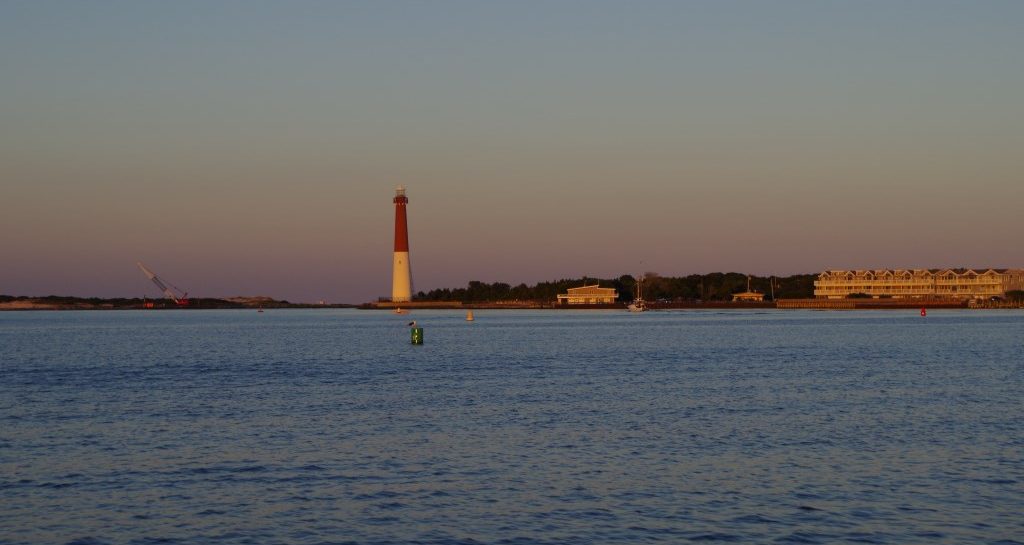
Jen wanted a birthday adventure.
We thought a lot about what we could do. New York City was high on the list, although we’ve already been through the Manasquan Inlet and Point Pleasant Canal during our boat delivery. We’d have to repeat those to go north, and since that trip accounted for the sum total of our ocean experience, I wanted to try something different. We also thought about Cape May, but that’s a long haul in the ocean for us. We eventually decided that there would be plenty of adventure for us in a more fun-sized trip to Atlantic City. We’ve sailed to Atlantic City before on the 22, but we did it on the inside, behind the barrier islands without ever going out into the ocean, so this would still offer a lot of new territory for us.
The best weather window seemed to be for us to leave on Wednesday. The plan was to sail to Myers Hole, just inside the Barnegat Inlet, wake up stupidly early the next day to traverse the inlet at slack water, sail to AC, stay one night at the state marina, and then sail home so that we could race on Saturday. We were actively more interested in the journey than the destination.
Wednesday
There were more boats out than we expected for a Wednesday in September (perhaps because the weather was nearly perfect), but the bay was still basically empty compared to the high summer. Light but steady winds enabled us to fly all of the sails, which was fortunate because I wanted to do a little shakedown for our new halyards and mainsheet before heading out into the ocean. Everything worked flawlessly as we made our way south. We also took the opportunity to re-initialize our tiller pilot. We had tried to use our tiller pilot (which is a Simrad unit that the previous owners had named “Sinbad”) on our delivery, but with the fog on that trip and my lack of knowledge on how closely it should be tracking, I had no confidence in it. The re-calibration was odd, since the instructions called for making “11/4 turns” and alternately described that as 450° (11/4 is 2 3/4, which would be 990°?) but we spun around for a while until it beeped and it seemed satisfied.
Editors Note: Several days later, I realized that it wasn’t “eleven fourths,” but was actually “one and a quarter,” and that the manual was just missing a space.
The other odd thing was that as we approached BI, there was a tug and barge coming down the Oyster Creek Channel. In five years of sailing Barnegat Bay, I have never seen that sort of commercial traffic. I assume it had something to do with the work that the Army Corps of Engineers is doing on the north jetty of the inlet, but it was quite out of place. I was thinking that he’d turn to follow the ICW north or south, but when he continued going straight toward the mainland (and us) we furled in the headsail, started the engine, and turned around to let him go.
We would have started the motor anyway to run the channel, so as soon as the tug passed we continued on toward Myers Hole, where we celebrated Jen’s birthday with a dinner of very small steaks, followed by the usual stunning sunset.
Myers Hole is usually a destination for us, and remains our favorite anchorage, but for this trip it was mostly a staging point. I had a difficult time sleeping as I contemplated the inlet lurking around the corner.
Thursday
Much of the New Jersey coast is lined with long skinny barrier islands that form protected bays between them and the mainland. There are gaps between the islands—inlets—that allow passage between the bays and the ocean, but they’re kind of a mess. When the tide is rising and the ocean attempts to drain through an aperture 1000ft wide, the forces at play are insane. The same happens when the tide goes out and the water flows in the other direction. The change in depth can cause waves coming in from the ocean to break, and if the wind and tidal current are working in opposite directions, inlets can develop standing breakers that appear to just roil in place for extended periods. Ocean currents, wave action, and storm damage can also cause shoaling inside the inlets, leaving only narrow channels for boats to use, and these mostly aren’t even charted since they change so frequently.
Barnegat Inlet, formed in the space between the Barnegat Peninsula and Long Beach Island, is among the more infamous inlets on the east coast, and was my primary concern for this trip. It is notoriously cranky. We’d also have to do a 30 mile run in the ocean and go through the Absecon Inlet on the other side, which aren’t exactly in our comfort zone either, but I felt like no amount of reading or talking to people was really preparing me for Barnegat given its treacherous reputation.
We woke up at 0530 and prepared the boat in the dark, with light slowly building to the east as we worked. We had run a track on the approach to the inlet when we’d arrived the day before, so at least we had that staked out, but I still knew nothing about the inlet itself other than what I’d read in the USCG Notice to Mariners: the channel was more narrow than usual because of construction equipment on Island Beach.
To be honest, I was more nervous than excited as I pushed the throttle up to ramming speed, turned the corner past the lighthouse, and pointed the boat toward the ocean.
As it turned out, things went well. I think we probably caught the inlet under ideal conditions, although the swell coming in from the ocean was larger than the video implies. The waves were breaking over the shoals on the south side, but stayed intact in the deeper water of the channel where we were. Their power can be seen as they crash into the rocks on the outside portions of the jetty. Running the inlet would have been momentous for us under any circumstances, but the fact that we did it at dawn amplified the effect. It was magnificent, and the sky continued to evolve for some time as the sun rose.
We motored out well past the breakers before turning to the south. We had had the main up for stability, but once we were out in the ocean and started to acclimate to the feel of ocean swell, we turned off the engine and started sailing. When we tried to deploy the jib, however, it wouldn’t unfurl. I went forward to look at the masthead (which was a sketchy prospect while standing on the foredeck with land fading off into the distance) and it seemed that the halyard had somehow twisted around the forestay. I didn’t want to force anything, or lose ability to furl in what little sail had unwound, so we wound it up and just gave up on the jib until we could look at it more closely in port. I was going to start the motor, but Jen asked if we could just sail on the main since it was so peaceful. I did some calculations, and since we were making about 3.5kts on the main alone and had left so early we still had plenty of time, so we decided to maximize our time in the ocean by sailing slowly.
There’s something on our charts called a “Fish Trap Area.” I have no idea if there are actual fish traps here or if this is like the shipwreck that’s supposed to be in Berkeley Island Cove according to the charts, but it seemed easiest to just avoid it. I aligned us with the boundary, hit “auto” and Sinbad dutifully took over steering. This was amazing. Even on just the main, with whatever unbalanced awkwardness that put on the tiller, Sinbad did his thing and kept us right on course. This made the trip far more relaxing. One of us could stand watch while the other took pictures, napped, made sandwiches, or whatever. It also enabled me to take the picture I’ve always wanted to take:
It’s not very exciting as a photograph, but this is wide open ocean. Although this technically wasn’t our first time out there, in some ways it felt like it because it was the first time we could actually see anything. We were never out of sight of land, but being able to see water to the horizon on three sides was endlessly entertaining.
When our speed dropped to 2.5kts, I fired up the engine and we motorsailed the last hour to the Absecon Inlet. The buoys marking the approach didn’t exactly line up with our charts, so we hung back and watched another sailboat enter the inlet. When we got up to the entrance, it actually turned out to be pretty obvious and we simply followed the marked channel in under completely benign conditions. I very nearly docked the boat successfully—I had us perfectly lined up in the slip and stopped before hitting anything…except that I never actually got close enough for Jen to step off, so we slowly drifted around within the slip and wound up putting on a show for the powerboaters, who watched but offered no assistance.
Once we had the boat secured and basically put away, we used the remaining daylight to address the stuck furler. I thought maybe that the spinner was stuck, but even after releasing the halyard and pulling the sail down a couple feet, the line really wanted to coil around the forestay. The friction was intense, and it took both of us to force the sail down. Once we got it down, the problem was clear: the new line was twisted. I don’t know if it was from being on the spool from the factory or from the way it was coiled for shipping or what, but whatever twist I had worked out while installing it clearly wasn’t enough. I unclipped it from the spinner and let it unwind, then I pulled the excess through until Jen had the last bit at the mast end and she let her side unwind, then we just kept running it through and repeating that until it seemed to relax. At one point, I said, “Hold on, I have an idea. Hold your side tight for a second.”
Jen replied, “Ok, I’ve got it.”
I then pulled on my side of the line and she resisted. I said, “No, grip it tightly, but let your arms move as I pull. I think this will work.”
She was taking this very seriously and complied. I then started moving her arms up and down by moving my arms down and up. It was as if we were operating one of those old-timey manually powered railroad things, and I started singing to our ridiculous movements in a oom-pah beat, “This is how we fix the boat, fix the boat, fix the boat…”
Jen laughed when she realized that this was not actually part of the solution, and said, “These powerboaters are going to think that this is what sailors actually do.”
To which I replied, “Well, we’re sailors, and we’re actually doing this.”
Anything to keep the powerboaters amused…
I had little confidence that anything we did fixed the problem for the long term, but after untwisting the rope we were able to successfully deploy and retrieve the sail at the dock.
My thoughts then turned to the NOAA forecast. The original prediction for our return trip of 5-10kts from the southeast had been upgraded to 15-20kts, gusting to 25 from the northeast, with 6ft seas at a period of 7 seconds, and a small craft advisory had been issued until 0600 on Saturday. We made the difficult decision to bow out of the race on Saturday and stay an extra night in AC to avoid having to come home in rough conditions.
Friday
Since we didn’t have to wake up early to time any inlets, we slept in. We eventually got ourselves put together enough to take a Jitney to the boardwalk, where we were better able to see the churned-up ocean. It was blowing out there. We got a late brunch/early dinner and watched whatever movie was playing at the Tropicana’s IMAX theater, and then walked the boards to a convenience store where we could replenish our drinks and snacks without paying casino prices.
During the day, the weather forecast continued to degrade. NOAA extended the small craft advisory through Sunday 0200. While we could have stayed another day, they also tacked fog onto the Sunday forecast, which was a horrifying prospect to me given our difficulties during the boat delivery. Jen and I talked at length about what to do. The wind forecast was less severe for Saturday than it had been for Friday and from a better direction (10-15kts SE instead of 15-20 NE) although the waves were the same, 6ft with a 7 or 8 second period. It wasn’t the wind that bothered me so much as the waves…15kts (or 25kts) wouldn’t have scared me in our 22 footer in the bay, but we’ve never sailed in real waves in big water. We also considered going back on the inside, which we loved when we did it the last time, but we kind of wanted to test our limits in the ocean. We decided that in the spirit of trying new things, we would opt for the devil we didn’t know, and chose waves over fog.
I drank some medicinal gin and tonics at the casino bar—limes to prevent scurvy and quinine in the tonic water to prevent malaria—and we went to sleep with the cool wind whipping through the cabin.
Saturday
My biggest concern was timing slack water at Barnegat Inlet, so we did some math based on utterly ignorant assumptions about how fast we could go in a churned up ocean and elected to leave at 0830 to catch slack at 0230. Slack before ebb at Absecon Inlet was at 0700, but everyone told me that Absecon isn’t a big deal, so I thought we’d be ok.
First Problem: We got off to an inauspicious start when I caught our lifeline on the anchor of the boat docked next while to us trying to get out of our slip. That quickly escalated into a full-on fiasco and quashed any lingering morning peace.
Second Problem: Absecon “No Big Deal” Inlet on an ebb with 6ft waves coming in was, uh, quite a big deal. If someone would have told me that the waves were 12ft tall, I would have believed them.
This photo was taken before it got bad.
By the time we were halfway out, we were taking spray over the length of the boat, and a couple times we shipped green water that poured over the cabintop. We had one crib board in as a precaution and were scrambling to put the others in, but we were being bucked around so much we could barely do anything except hold on. We were both instantly soaked, and I was wondering if we should have just gone back on the inside, although the only thought worse than continuing onward was turning around in those waves.
We pushed through, thinking that it would get better once we were out in open water. The gentle, poetry-inspiring ocean from Thursday had been replaced by an angry, profanity-inducing North Atlantic, and things weren’t that much better out there. Everything was wet. Everything was difficult. We were getting pounded. Jen tried to use the head at one point and was thrown around the cabin like she was in a washing machine. In periods when we weren’t taking spray, granules of salt (not unlike table salt) would coalesce on things, and that would all get washed away/replenished with the next batch of unusually tall waves.
We have very few photos because we weren’t in a position to be messing around with cameras, and as usual, it doesn’t look that bad in the photos that we do have. I can assure you that it was bad though, at least for us. We were both slightly seasick and I think both substantially unhappy. We had put up the main with one reef before going through Absecon, and that provided some stability once we turned to the north and were taking the wind and waves on the beam. I was afraid to put out the jib because of the halyard issues—I wasn’t about to go forward and try to pull it down if it somehow got out and wouldn’t come back in—so we continued to run the engine. Jen felt better with the motor running, while I imagined it sucking up something atrocious from our stirred-up fuel tank and stalling. We had plenty of diesel though, and I’d checked the filters before we left (clean), so we pressed on.
Neither of us can be certain if the sea state calmed down or if we just began to adapt, but at some point our thoughts definitely switched from panic to annoyance. We got Sinbad going, and although he handled the waves relatively poorly, it was less fatiguing for me to let him take the helm for some stretches. I manually took over during particularly strong sets or when there were other boats around—this made our intended course clearer for the other boats, since I could steer within a narrower range of headings. Even at his worst, he didn’t seem to be struggling mechanically though, just intellectually.
Being in sight of land also helped us. Seeing our progress as familiar landmarks faded over our port quarter reinforced that we were actually making good time. Barnegat Light was perhaps the most significant landmark, as it’s been for weary navigators for 157 years, and as we approached it I actually slowed us down. We were ahead of schedule, and I wasn’t about to try Barnegat on an ebb after seeing Absecon.
I idled the engine and we just sailed on the main for a bit while we let a head boat and a sportfisher pass ahead of us, a half mile off. I tried to psyche myself up by thinking about all of the imbeciles and newbs and drunks who run the inlet all the time in worse conditions without ending up on the rocks. I started our approach all the way out at the gong so that I’d have some time to feel how the boat was handling with big waves on the stern before actually getting into the teeth of the inlet. I throttled up to 3200rpm and aimed the boat.
My overriding thought during the entire process was that we were too slow. I kept asking Jen if we were moving, literally thinking that something must have wrapped around the prop, but we were going well over 6kts and much faster when surfing down the waves. Maybe I wanted to pace the waves better, or maybe I wanted to just get it over with, or maybe I had gotten myself into the brain state of someone in a car accident who experiences everything in slow motion, but despite the world being at 33 1/3 instead of 45, we did fine. I just kept the boat pointing down the channel, and that was apparently enough. Jen was quick with depth soundings and traffic reports when I requested them, allowing me to focus on controlling the boat. Despite all of the times we’ve been to Myers Hole and seen the lighthouse illuminated in glowing amber by a low-slung sun, I was never so happy to see Ol’ Barney as when we approached it from the other side of land.
As we followed the channel around toward Myers Hole, we were pleasantly surprised to be hailed by Mystique, who was anchored there with several other Windjammers. They welcomed us back and asked if we wanted to hang out. It was a tempting offer, and we would have loved to talk about our adventures and misadventures, but we were wet and exhausted from the ocean and just wanted to get home, so we gave our apologies. It was great to be back in friendly waters though.
We shut off the engine and sailed the Oyster Creek Channel, which is something that we never do, but I was feeling invincible. The jib worked perfectly, although I don’t regret the decision to not test it in the ocean. At one point, a powerboater drove by very slowly and apologized for his wake (we were in a narrow portion of the channel and he wasn’t doing anything obnoxious.) I smiled and waved and said with sincerity, “No problem, thanks for trying.” There was nothing he could have done, even with twin 200hp engines, that could have rivaled what we’d already seen that day. The sail back was peaceful and gave us a chance to decompress a bit, and I gained a newfound appreciation for the calm waters of our bay.
It was enlightening to see a couple different sides of the ocean in this trip. Both of us loved sailing in the ocean on Thursday, and felt like we could have just kept going indefinitely in those conditions. Neither of us particularly loved sailing back, although I viscerally felt like our seamanship ratcheted up a notch by the end of it. Fortuitous certainly took it all in stride, which was reassuring. Barnegat Inlet has been looming out there like a charted sea monster for me my entire sailing career, and I’m glad that I’ve had a chance to face it. I think we made the right calls when we had to, and I think we pushed it when the odds were in our favor to do so. This trip put a lot of things in perspective for us, and I’m glad that we got to celebrate Jen’s birthday with a serious coastal cruising adventure.
More photos are in the gallery here: /gallery-ac-on-the-outside
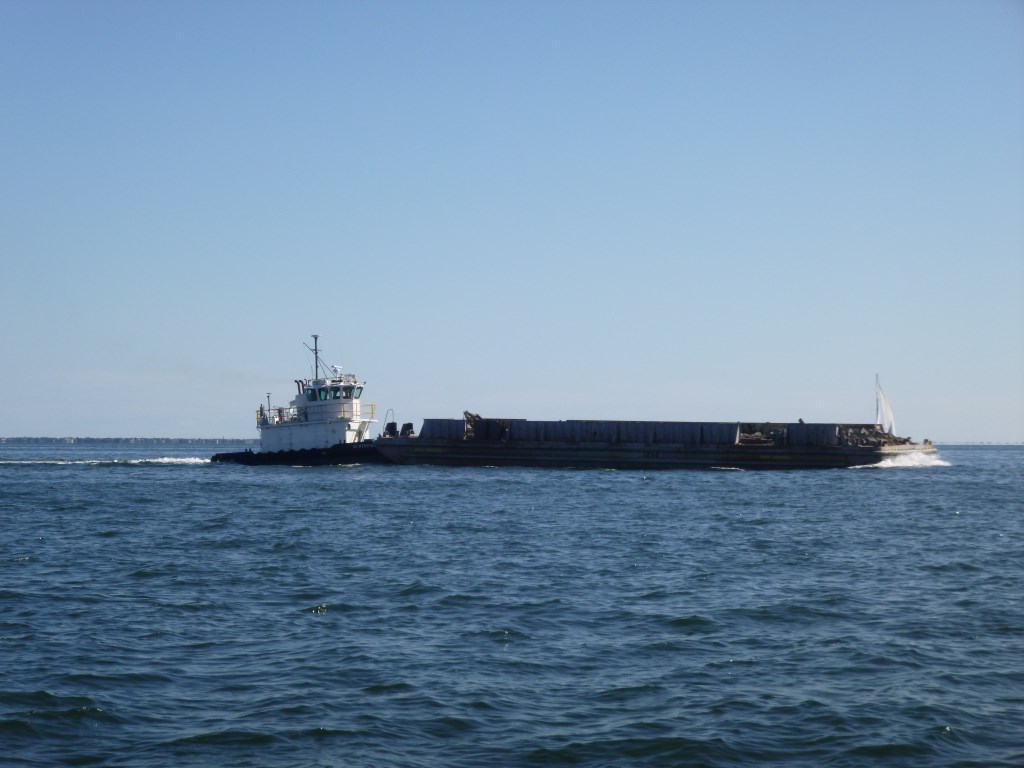
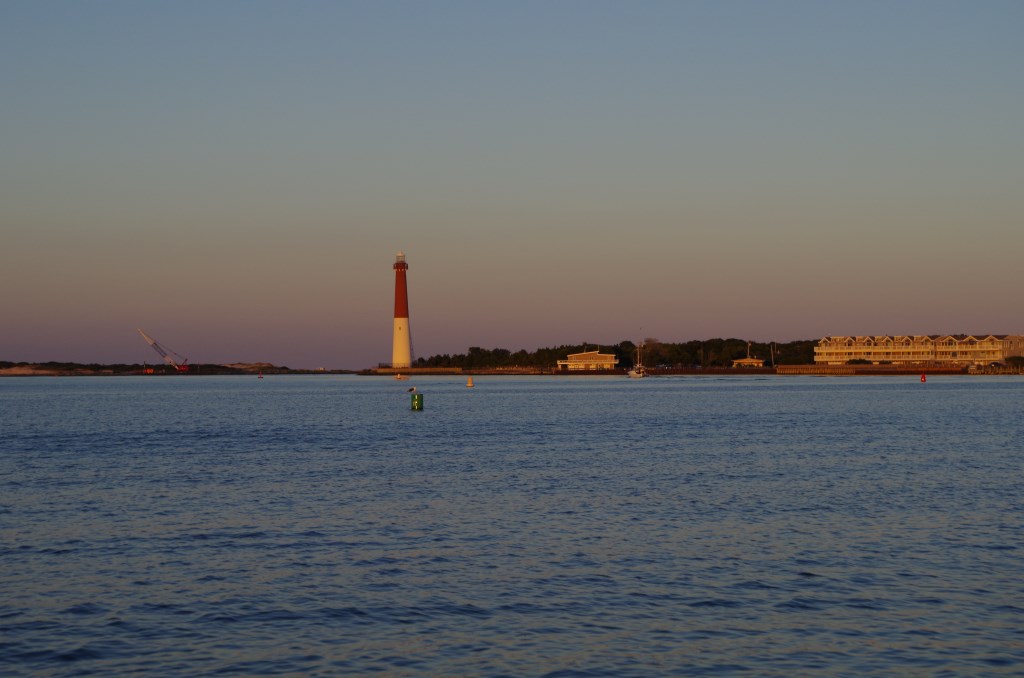
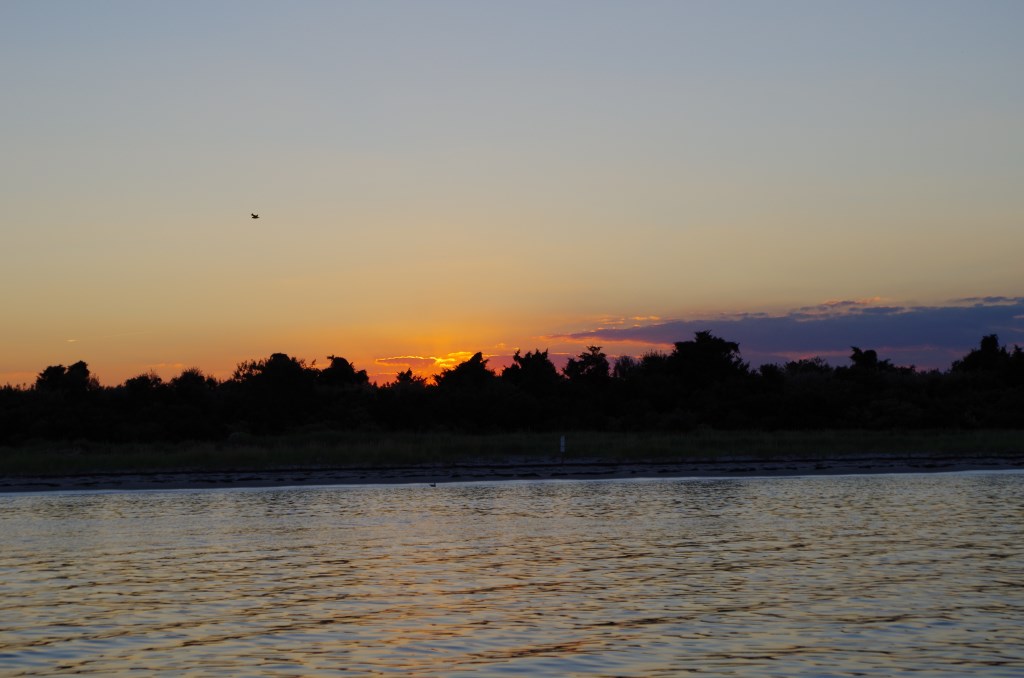
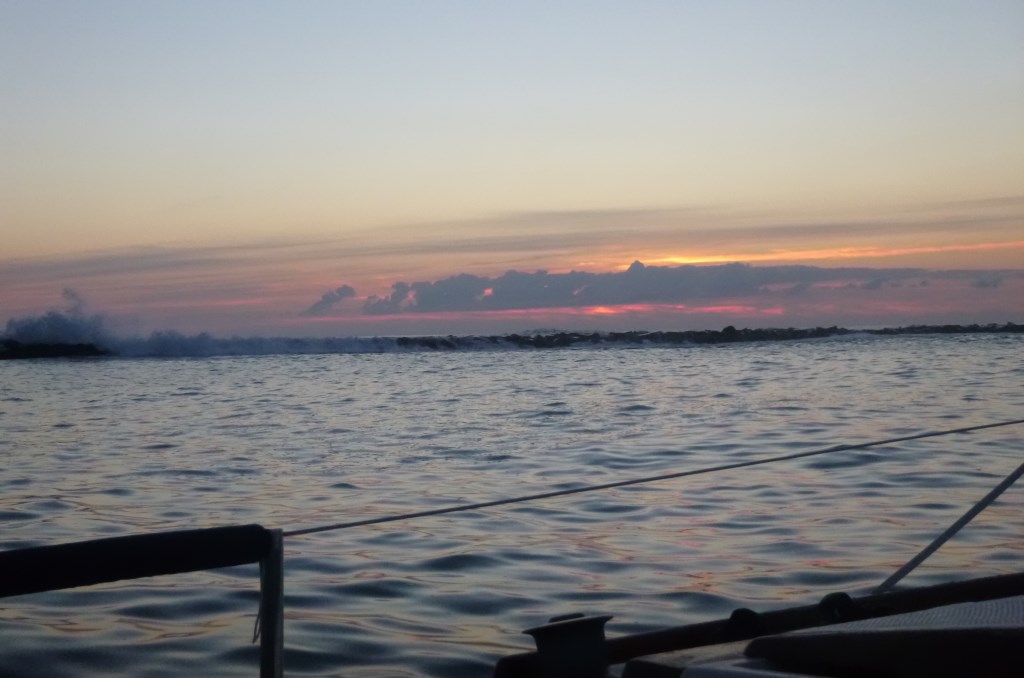
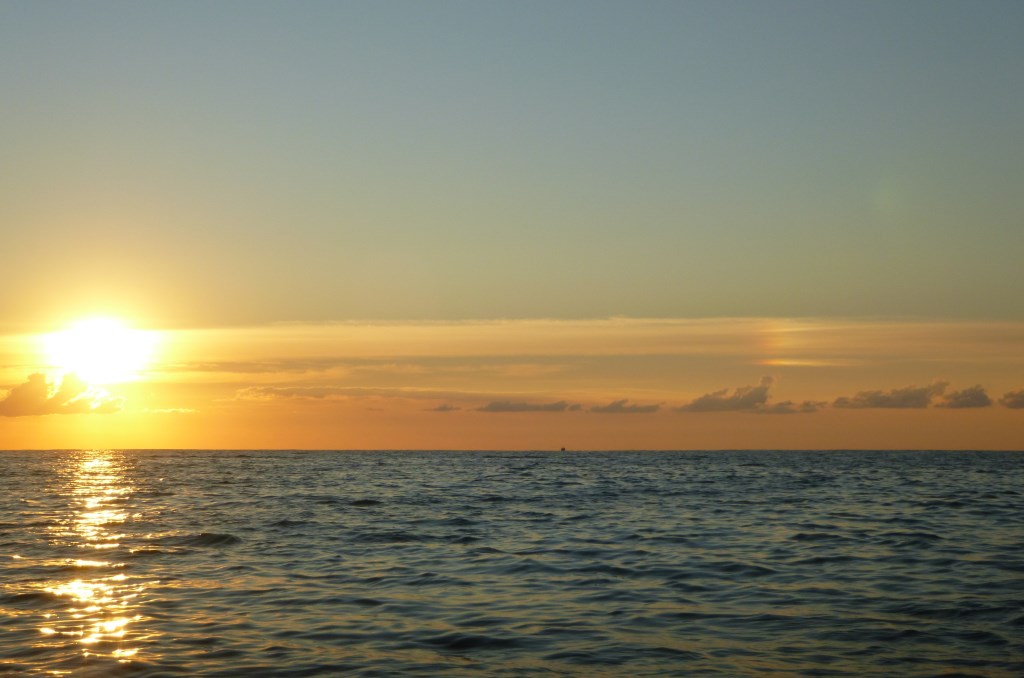
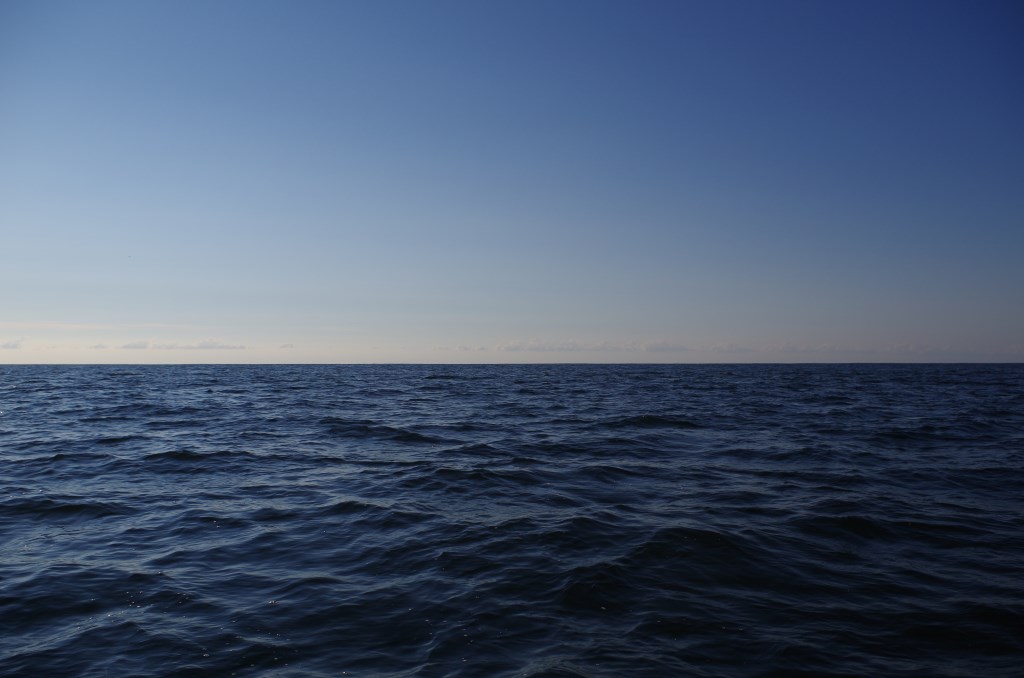
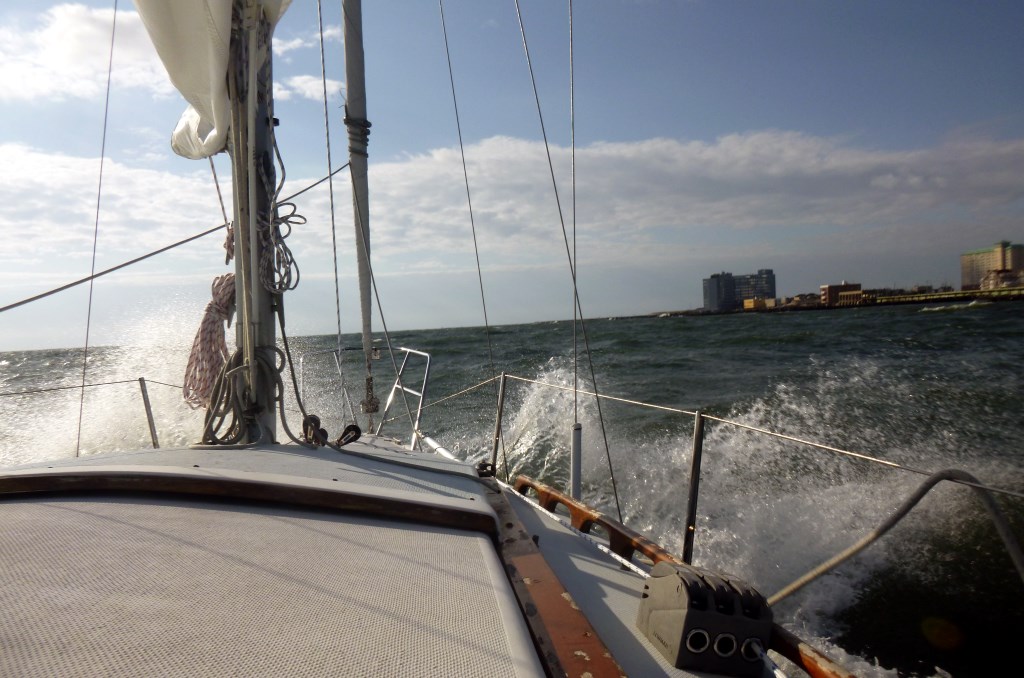
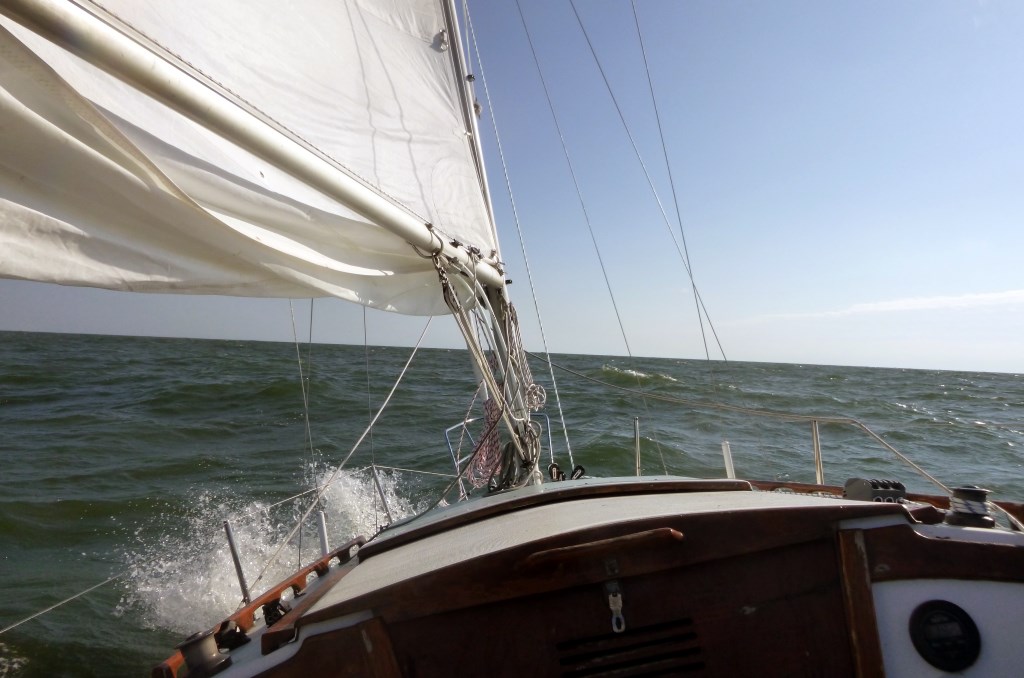
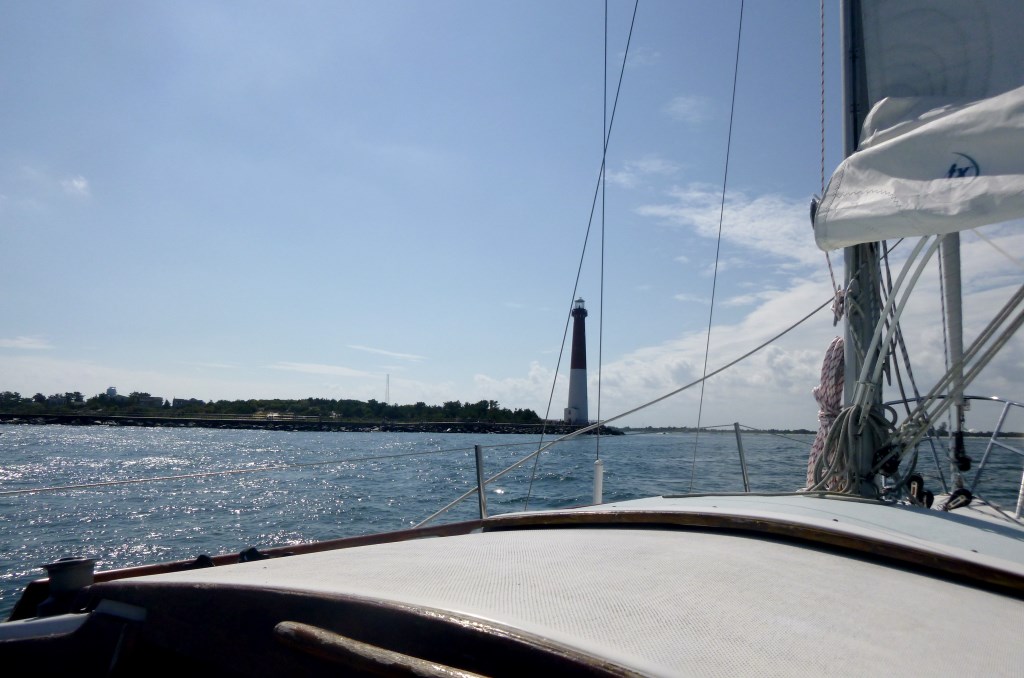
Just started learning to sail and bought a Paceship about a month ago. Love your blog. Very well written, great photos and engrossing videos. Found it thru some rambling of yours over on Sailnet (which i’ve been on for over a year).
Basically, i just wanted to let you know that somebody out here appreciates the time you take to write up and post your adventures whether they be maintenance related or actual sailing. Keep up the great work!
Mike
P.S. I keep my boat at Manahawkin. Hence the interest in NJ related sailing!
That's great to hear. Thanks very much for reading and good luck with your boat.
Amazing how you don’t get bored watching the ocean, isn’t it? Time to try an overnight on the outside. You’ll love it.
Someday, for sure. Thanks for checking out the boat log, Donna.
looks like a fun trip
Thanks man. 🙂
Nice blog entry, great pics. Looks like an awesome adventure man.
Thanks Joe. It was pretty intense out there, at least on the return trip.